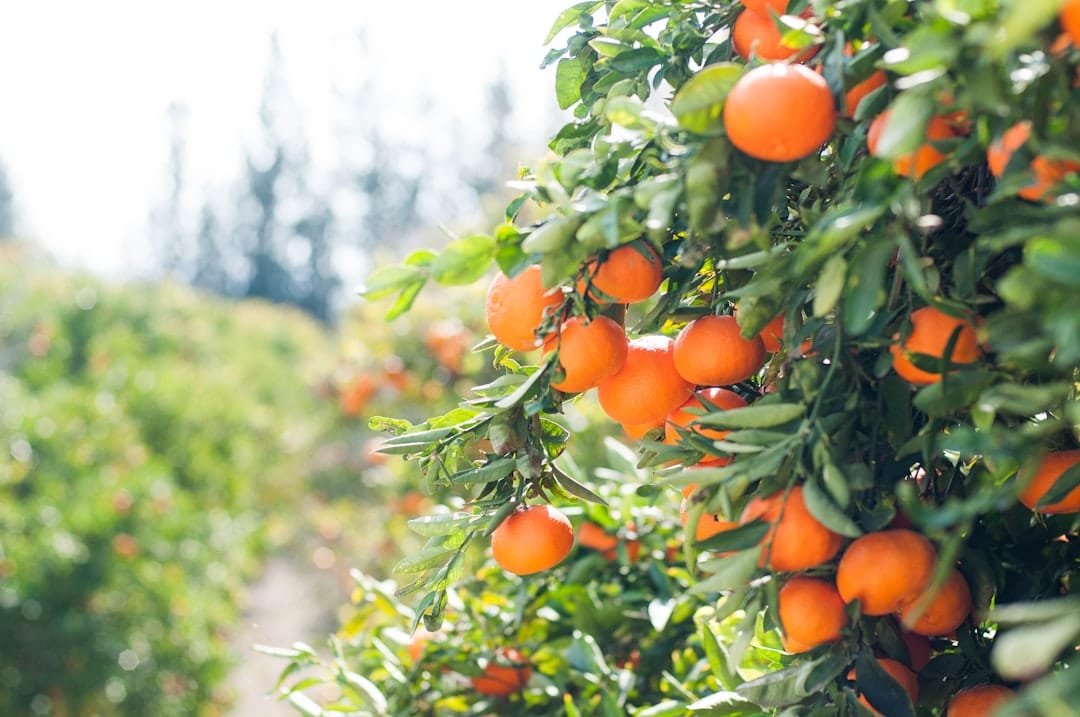Agricultural subsidies are government-provided financial assistance to farmers and agribusinesses. These subsidies aim to supplement income, manage agricultural commodity supply, and influence commodity costs. They can take various forms, including direct payments, price supports, crop insurance, and conservation programs.
The primary objectives of agricultural subsidies are to stabilize farm income, support domestic food production, and ensure a consistent food supply for consumers. However, the effects of these subsidies on supply and demand, market prices, farming practices, and the environment have been subject to debate and controversy. Many countries have implemented agricultural subsidies for decades, with the United States and the European Union being among the largest subsidizers of their agricultural sectors.
While these subsidies are intended to benefit farmers and consumers, they have also resulted in unintended consequences that have impacted the global agricultural market. Understanding the effects of agricultural subsidies on various aspects of the agricultural industry is crucial for assessing their overall impact and effectiveness.
Key Takeaways
- Agricultural subsidies are financial assistance provided to farmers by the government to support their income and manage the supply of agricultural commodities.
- Agricultural subsidies can lead to an increase in supply and a decrease in prices, which can have both positive and negative effects on producers and consumers.
- The impact of agricultural subsidies on market prices can lead to distortions in the market and affect the competitiveness of domestic and international producers.
- Agricultural subsidies can influence farming practices by encouraging the production of certain crops and the adoption of specific technologies.
- The environmental consequences of agricultural subsidies can include overproduction, land degradation, and water pollution, leading to long-term sustainability challenges.
The Effects of Agricultural Subsidies on Supply and Demand
The Impact of Subsidies on Supply and Demand
By providing financial assistance to farmers, subsidies can lead to an increase in the production of certain crops or livestock, resulting in an oversupply of these commodities in the market. This oversupply can then lead to lower market prices, as the increased supply outstrips demand.
Unintended Consequences of Subsidies
On the other hand, subsidies can also lead to a decrease in the production of certain commodities if farmers are incentivized to switch to subsidized crops or practices. This can result in a shortage of these commodities in the market, leading to higher prices.
Distorting Market Forces and Inefficiencies
Furthermore, agricultural subsidies can distort the natural market forces of supply and demand by artificially propping up certain industries or products. This can lead to inefficiencies in resource allocation and production, as farmers may be incentivized to produce crops that are not necessarily in high demand or are not environmentally sustainable. As a result, agricultural subsidies can lead to market imbalances and inefficiencies that can have long-term consequences for both producers and consumers.
Impact of Agricultural Subsidies on Market Prices

The impact of agricultural subsidies on market prices is a complex and multifaceted issue. On one hand, subsidies can lead to lower market prices for certain commodities due to the oversupply created by increased production. This can benefit consumers by making food more affordable and accessible.
However, lower market prices can also have negative implications for farmers, as they may struggle to cover their production costs and maintain a sustainable income. This can lead to financial instability for farmers and a decrease in overall agricultural productivity. On the other hand, agricultural subsidies can also lead to higher market prices for certain commodities if they result in decreased production due to farmers shifting their focus to subsidized crops or practices.
This can lead to increased costs for consumers and potentially contribute to food insecurity in some regions. Additionally, higher market prices can also lead to inflationary pressures in the broader economy, as food is a fundamental component of the consumer price index. As such, the impact of agricultural subsidies on market prices is a delicate balance that requires careful consideration of both producer and consumer welfare.
Influence of Agricultural Subsidies on Farming Practices
Agricultural subsidies have a significant influence on farming practices, as they can incentivize farmers to adopt certain methods or technologies in order to qualify for subsidies. For example, subsidies for specific crops or conservation practices can encourage farmers to prioritize these activities over others, leading to changes in crop rotations, land use, and overall farming methods. This can have both positive and negative implications for the environment, as well as for the long-term sustainability of agricultural production.
Furthermore, agricultural subsidies can also influence the adoption of new technologies and practices that may not necessarily be environmentally sustainable or beneficial in the long run. For example, subsidies for certain types of irrigation or fertilization methods may encourage farmers to use these techniques even if they are not the most efficient or environmentally friendly options. As a result, agricultural subsidies can shape farming practices in ways that may not align with broader environmental or sustainability goals.
Environmental Consequences of Agricultural Subsidies
The environmental consequences of agricultural subsidies are a critical consideration in assessing their overall impact. While some subsidies may be designed to promote conservation practices or environmentally friendly farming methods, others may inadvertently lead to negative environmental outcomes. For example, subsidies that encourage increased production of certain crops or livestock can lead to deforestation, habitat destruction, and increased greenhouse gas emissions.
Additionally, subsidies that incentivize the use of certain pesticides or fertilizers can contribute to soil degradation, water pollution, and loss of biodiversity. Furthermore, agricultural subsidies can also influence land use patterns and contribute to the conversion of natural ecosystems into agricultural land. This can have far-reaching consequences for biodiversity, ecosystem services, and overall environmental health.
As such, it is important to carefully consider the environmental implications of agricultural subsidies and ensure that they align with broader sustainability goals and conservation efforts.
Social and Economic Implications of Agricultural Subsidies

The social and economic implications of agricultural subsidies are wide-ranging and complex. On one hand, subsidies can provide much-needed support for farmers and rural communities, helping to stabilize farm income and maintain a viable agricultural sector. This can contribute to food security, rural development, and overall economic stability in many regions.
However, agricultural subsidies can also lead to market distortions, inefficiencies, and inequities that can have negative implications for both producers and consumers. For example, large-scale agribusinesses may benefit disproportionately from agricultural subsidies, leading to consolidation in the agricultural sector and decreased opportunities for small-scale farmers. Additionally, subsidies that encourage the production of certain crops or livestock may lead to monocultures and decreased crop diversity, which can have negative implications for food security and resilience in the face of climate change or other environmental challenges.
As such, it is important to carefully consider the social and economic implications of agricultural subsidies in order to ensure that they contribute to broader societal goals and well-being.
Future Outlook for Agricultural Subsidies and Market Dynamics
The future outlook for agricultural subsidies and market dynamics is uncertain and subject to ongoing debate and discussion. As global challenges such as climate change, population growth, and food security become increasingly pressing, there is a growing need to reevaluate the role of agricultural subsidies in shaping the future of food production and consumption. It is essential to consider how agricultural subsidies can be reformed or redesigned to better align with sustainability goals, environmental protection, and equitable access to food.
Furthermore, as global trade dynamics continue to evolve and shift, there is a need to consider how agricultural subsidies impact international trade agreements and relationships. The World Trade Organization (WTO) has been actively involved in discussions around agricultural subsidies and their impact on global trade dynamics, highlighting the need for greater transparency and accountability in subsidy programs. In conclusion, agricultural subsidies have a significant impact on various aspects of the agricultural industry, including supply and demand dynamics, market prices, farming practices, environmental consequences, social and economic implications, and future market dynamics.
It is essential to carefully consider the overall impact of agricultural subsidies in order to ensure that they contribute to broader societal goals and well-being while promoting sustainable agriculture and environmental stewardship. As global challenges continue to evolve, there is a growing need to reevaluate the role of agricultural subsidies in shaping the future of food production and consumption in a way that benefits both producers and consumers while safeguarding the environment for future generations.
If you’re interested in learning more about the impact of agricultural subsidies on market dynamics, you should check out the article “The Effects of Agricultural Subsidies on Global Trade” on The Econosphere. This article delves into the ways in which agricultural subsidies can distort global trade patterns and influence market dynamics, providing valuable insights into the complexities of this issue.
FAQs
What are agricultural subsidies?
Agricultural subsidies are financial assistance provided by the government to farmers and agribusinesses to support their income, manage the supply of agricultural commodities, and influence market prices.
How do agricultural subsidies impact market dynamics?
Agricultural subsidies can affect market dynamics by influencing the supply and demand of agricultural products, leading to changes in prices, production levels, and trade patterns. They can also impact the competitiveness of domestic and international markets.
What are the potential benefits of agricultural subsidies?
Agricultural subsidies can help stabilize farm incomes, support rural communities, ensure food security, and promote agricultural production. They can also incentivize sustainable farming practices and technological innovation.
What are the potential drawbacks of agricultural subsidies?
Critics argue that agricultural subsidies can distort market signals, lead to overproduction, contribute to environmental degradation, and create trade imbalances. They can also favor large agribusinesses over small-scale farmers.
How are agricultural subsidies evaluated for their impact on market dynamics?
Evaluating the impact of agricultural subsidies on market dynamics involves analyzing factors such as production levels, prices, trade flows, farm incomes, and consumer welfare. Economic models and empirical studies are often used to assess the effects of subsidies.








